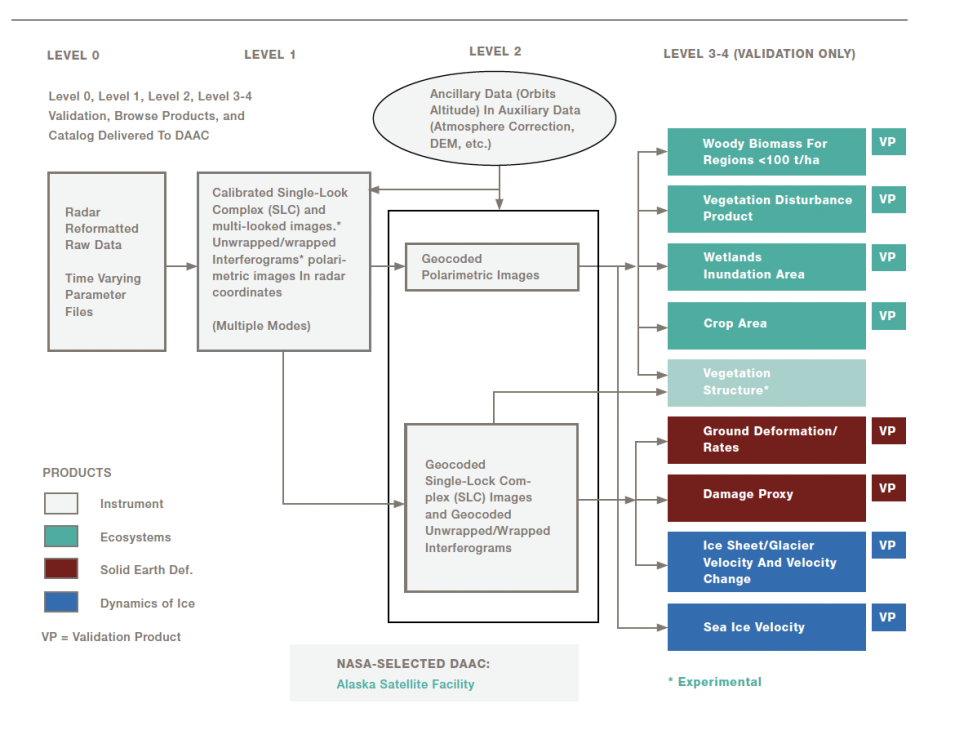The world around us is in a perpetual state of motion: from forest growth to sea level rise to tectonic movement, almost nothing stays the same from one moment to the next. Understanding—and ultimately, predicting—how Earth’s surface evolves over time is an enduring challenge, and one that is crucial to helping communities make informed choices in industries such as agriculture production, disaster management, infrastructure maintenance, and climate response.
The July 30 launch of the NASA-ISRO Synthetic Aperture Radar (NISAR) satellite, a collaboration between NASA and the Indian Space Research Organization (ISRO), is on its way to revolutionize the study of change on Earth. Equipped with two synthetic aperture radars (SAR), an L-Band SAR and an S-Band SAR, NISAR will scan nearly every land and ice surface twice every 12 days.
The data collected will empower researchers and data users across the globe to measure land surface movement with incredible precision, in some instances down to a centimeter. This remote-sensing data can help farmers determine which plots need irrigation, volcanologists identify early signs of eruption, and post-storm response teams assess the location and extent of floods—all without the need for in situ instruments that can be costly to procure and dangerous to install.
The First Dual-Frequency System
One of the advantages of SAR technology is its ability to capture continuous observations day and night, even through cloud cover and storms. NISAR’s dual L-band and S-band radars operate on different frequencies, providing time series measurements that can be used separately or in tandem. For example, the L-band radar, which operates at a 24 cm wavelength, can penetrate tree cover and snow to provide details about variations in forests, wetlands, farmlands, and ice sheets. The S-band radar, which operates at a 12 cm wavelength, will excel at quantifying changes such as tree canopy height and melting snowpack.
In combination, research teams will be able to use NISAR data to get a complete picture of incremental change over time for almost any location on Earth.

